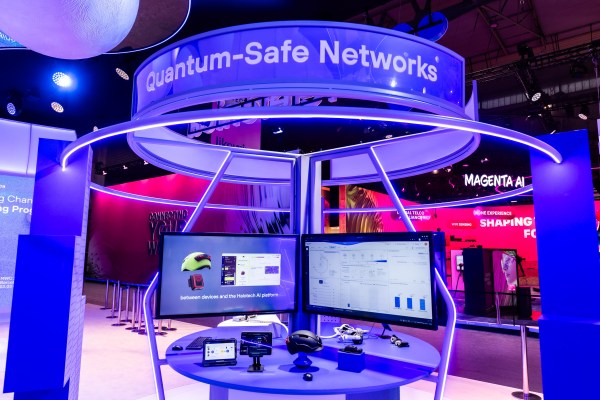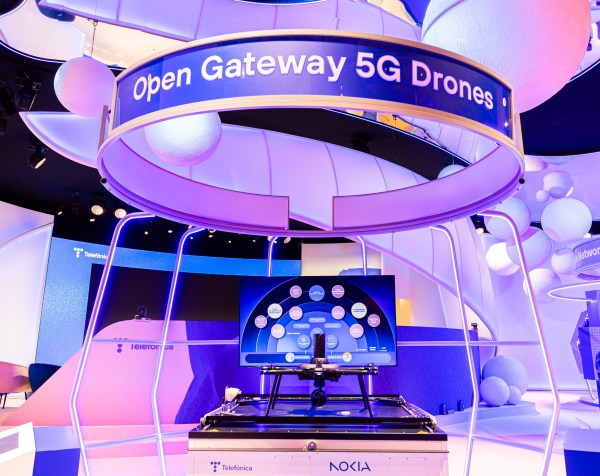Tell us a little about yourself. What is your job at Telefónica?
I’m Patricia and I joined Telefónica in 2014 as an intern in radio optimisation management. In this area, our main objective is to improve the performance of the mobile network, making sure we offer the best possible quality of service. This allows us to guarantee an excellent user experience for our customers, while maximising the use of the resources available in the existing infrastructure.
Our day-to-day work is full of diverse challenges and projects: from providing customised coverage to large customers to the rollout of 5G accompanied by the progressive shutdown of 2G and 3G networks. We also participate in the implementation of innovative solutions such as network slicing, design coverage strategies for large events and test new software functionalities that make the network more efficient. It’s a very dynamic and challenging job!
For those of us who are not very clear, could you explain what 5G is and how it differs from 4G?
5G is the fifth generation of mobile networks, and its difference with respect to 4G is not only that it is ‘faster’, but it goes much further: it reduces response time (latency) to almost instantaneous levels, it allows many devices to be connected at the same time without the network becoming saturated and, of course, it improves connection speed considerably.
To understand it better, the ITU (International Telecommunication Union) defined three main pillars to define 5G, each of them designed for different use cases:
- eMBB (Enhanced Mobile Broadband): This is what users will notice most. This is where ultra-fast speeds, which can reach up to 20 Gbps, and the ability to handle vastly more traffic on the network come into play. This is what makes it possible to enjoy ultra high-definition streaming or augmented reality experiences.
- mMTC (Massive Machine Type Communications): This is more focused on the Internet of Things (IoT). 5G can support a density of connected devices 10 times greater than 4G, allowing everything from sensors in a smart city to devices in factories to be connected.
- uRLLC (Ultra-Reliable and Low Latency Communications): This is ultra-low latency, around 1 millisecond (compared to 20-30 milliseconds for 4G). This is crucial for applications where every second counts, such as the control of autonomous vehicles or remote surgeries.
In short, 5G not only improves on what we already know, but opens the door to new possibilities, transforming the way we interact with technology.
What are the benefits of 5G?
5G brings a number of benefits that go beyond speed. To understand it better, it is first important to differentiate between two types of configurations: 5G NSA (Non-Standalone) and 5G SA (Standalone).
- 5G NSA was the first deployed version, which combines 5G base stations controlled by the existing 4G network core. This enabled the first 5G services to be offered, albeit with certain limitations in terms of its full potential.
- The 5G SA however already incorporates a dedicated 5G network core, without relying on 4G. This allows for automated, scalable and efficient network management, with new capabilities such as network slicing, which allows the creation of virtual networks within the same infrastructure, tailored to the specific needs of different users or businesses.
In short, 5G not only improves connectivity, but also transforms the way networks are managed and customised, opening up new possibilities for users and businesses alike.
How will 5G transform the world as we know it today?
5G not only connects people, but also facilitates efficient machine-to-machine (M2M) communication, which will drive breakthroughs in sectors such as autonomous vehicles, medicine and entertainment.
Use cases already exist today that allow us to anticipate the benefits of this technology, but in the future, autonomous vehicles will be able to communicate with each other and with urban infrastructure to improve traffic safety and efficiency. In the medical field, remote surgeries will become a reality, allowing specialists to operate remotely with great precision. In addition, 5G will make immersive virtual and augmented reality experiences more accessible and realistic than ever. It will also transform industries such as agriculture, logistics and manufacturing, making their processes more connected and efficient.
Can you give us any practical examples of how 5G can be applied in our daily lives?
Of course! 5G is already improving our daily lives with innovative applications. For example, imagine watching a football match with augmented reality glasses that show you statistics in real time, without missing a second of the play.
In industry, 5G is already enabling smart cameras in factories to detect product defects instantly, improving quality and efficiency. And in hotels, network slicing can ensure seamless connectivity for services such as streaming, even if the place is full of guests.
Why does the mobile sometimes switch from 4G to 5G?
The mobile switches from 4G to 5G automatically to make sure you are always connected to the best network available at the time. If you are in an area where there is a closer 4G antenna or 5G has less coverage, your phone will switch to 4G to give you a more stable signal. This is because, although the rollout is progressing very quickly, 5G is not yet available everywhere.
Could 5G replace fibre optics or are they different?
Although 5G and fibre optics have a lot in common, they do not replace each other; they complement each other.
5G is ideal for delivering high speed and mobility in places where it is not feasible to install fibre. Fibre, on the other hand, is fixed and very stable, perfect for applications such as working from home or online gaming.
In fact, 5G needs a robust transmission network, and that’s where fibre comes in, which has been key to enabling 5G deployment. So rather than competing, the two are working together to build a more connected future.
What role does AI play in optimising and sustaining 5G?
Artificial intelligence (AI) improves 5G networks in several ways. One of the most important is through Self-Organising Networks (SON networks), which use AI to automatically adapt to changes and improve quality of service. AI also helps automate network management, allowing problems to be resolved faster and with less human intervention. In addition, it personalises mobile services according to user preferences and improves security by detecting threats in real time.
In short, AI makes 5G networks faster, more efficient and more secure, improving the user experience across the board.
What are the benefits of 5G in the context of autonomous vehicles, AR/VR, or IoT?
In autonomous vehicles, 5G enables real-time communication between cars and with the urban infrastructure. In AR/VR, it offers seamless immersive experiences thanks to its high speed and low latency. In IoT, 5G supports millions of connected devices at once, such as sensors in smart cities or medical devices in hospitals.
Can you explain the general architecture of a 5G network?
To put it very simply, the architecture of a 5G network includes several layers and components:
- Access layer: uses base stations and antennas to connect mobile devices to the network.
- Transport layer: Transfers data between base stations and the network core.
- Core layer: Manages the connection and routing of data, and uses advanced technologies such as network functions virtualisation (NFV) andnetwork slicing to deliver personalised and efficient services.
Which colleague do you nominate for this interview who you consider to be excellent at their job?
In that case I nominate my colleague Mónica Ramírez, who is an expert in 5G.











